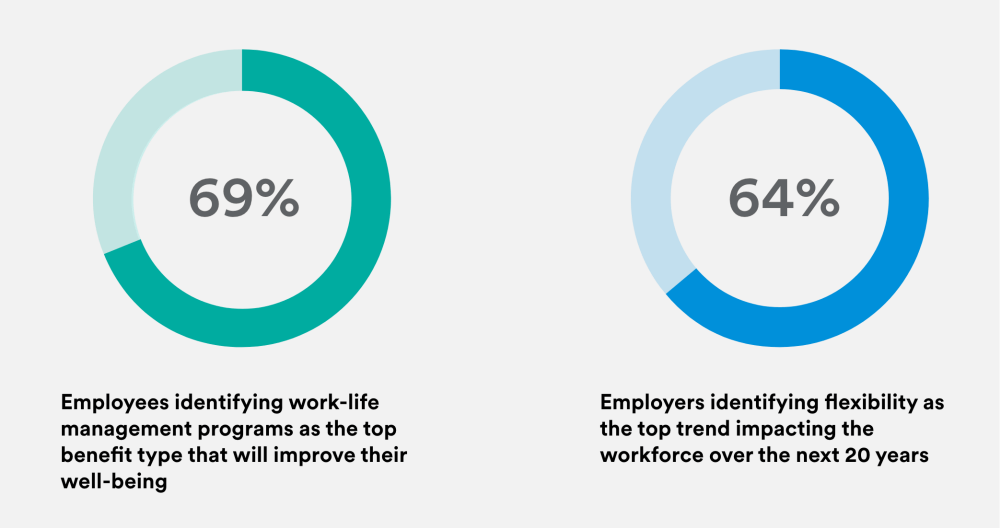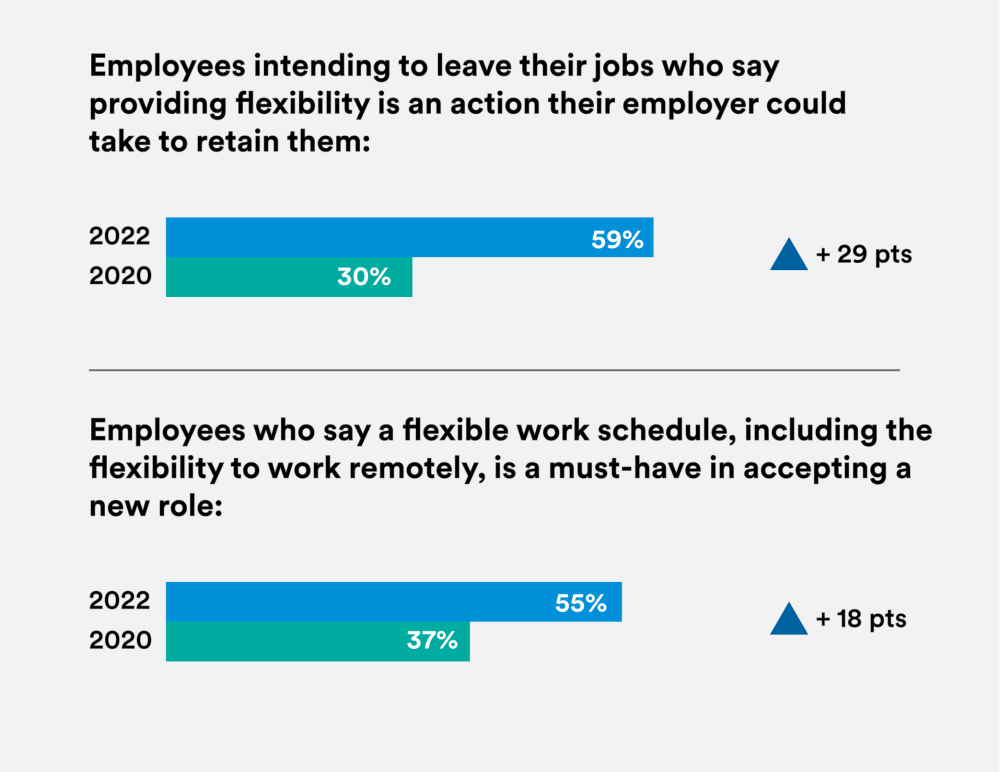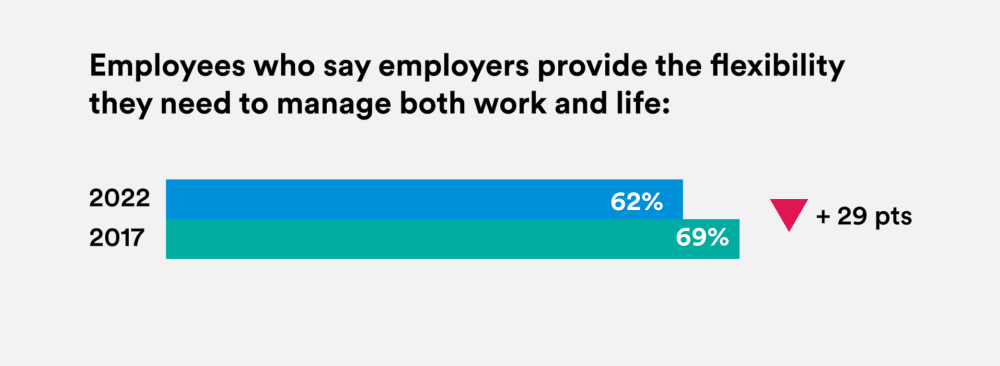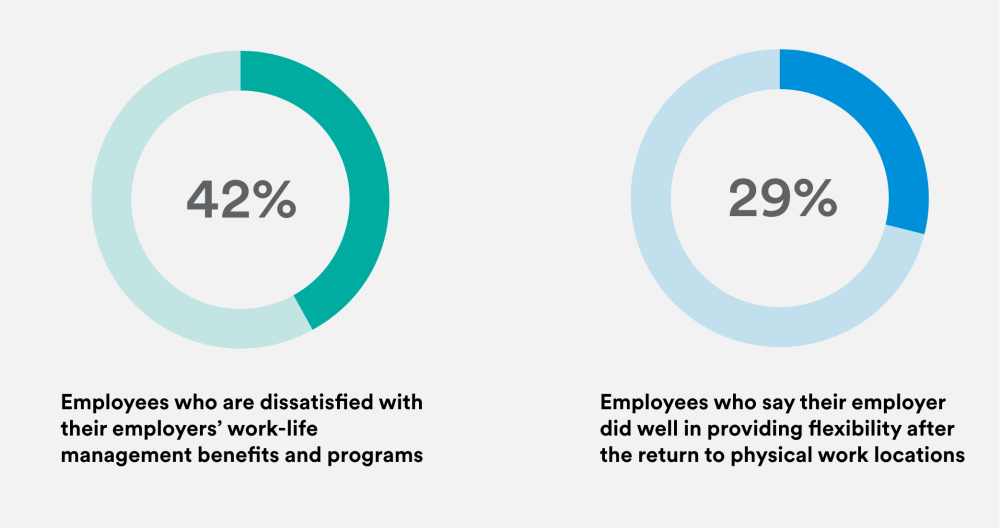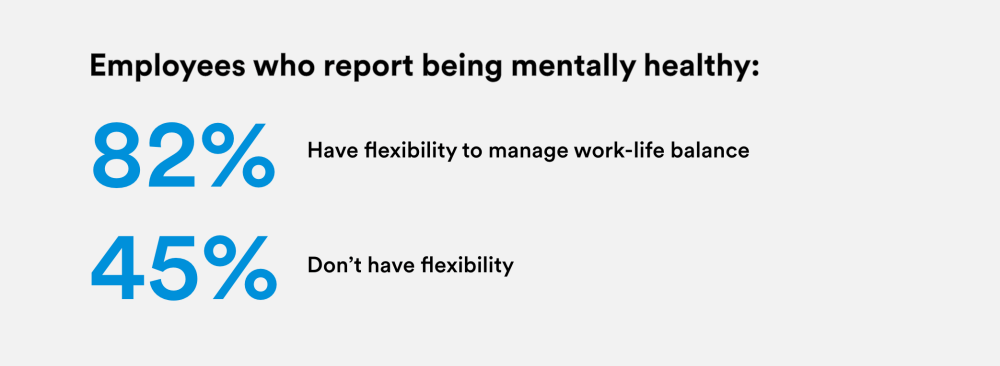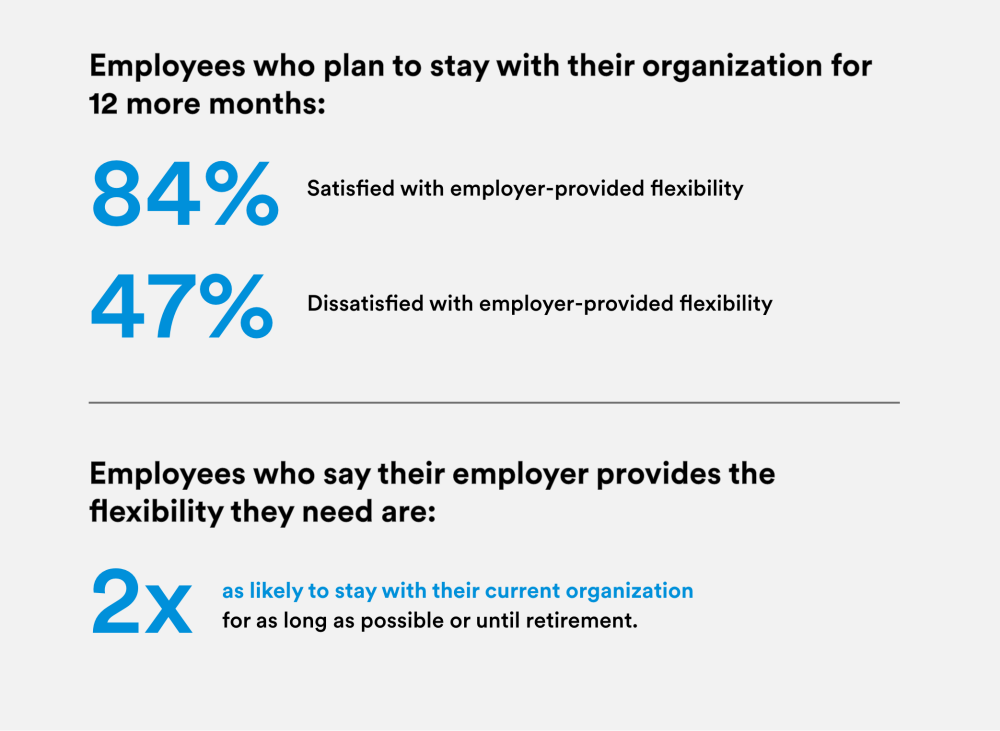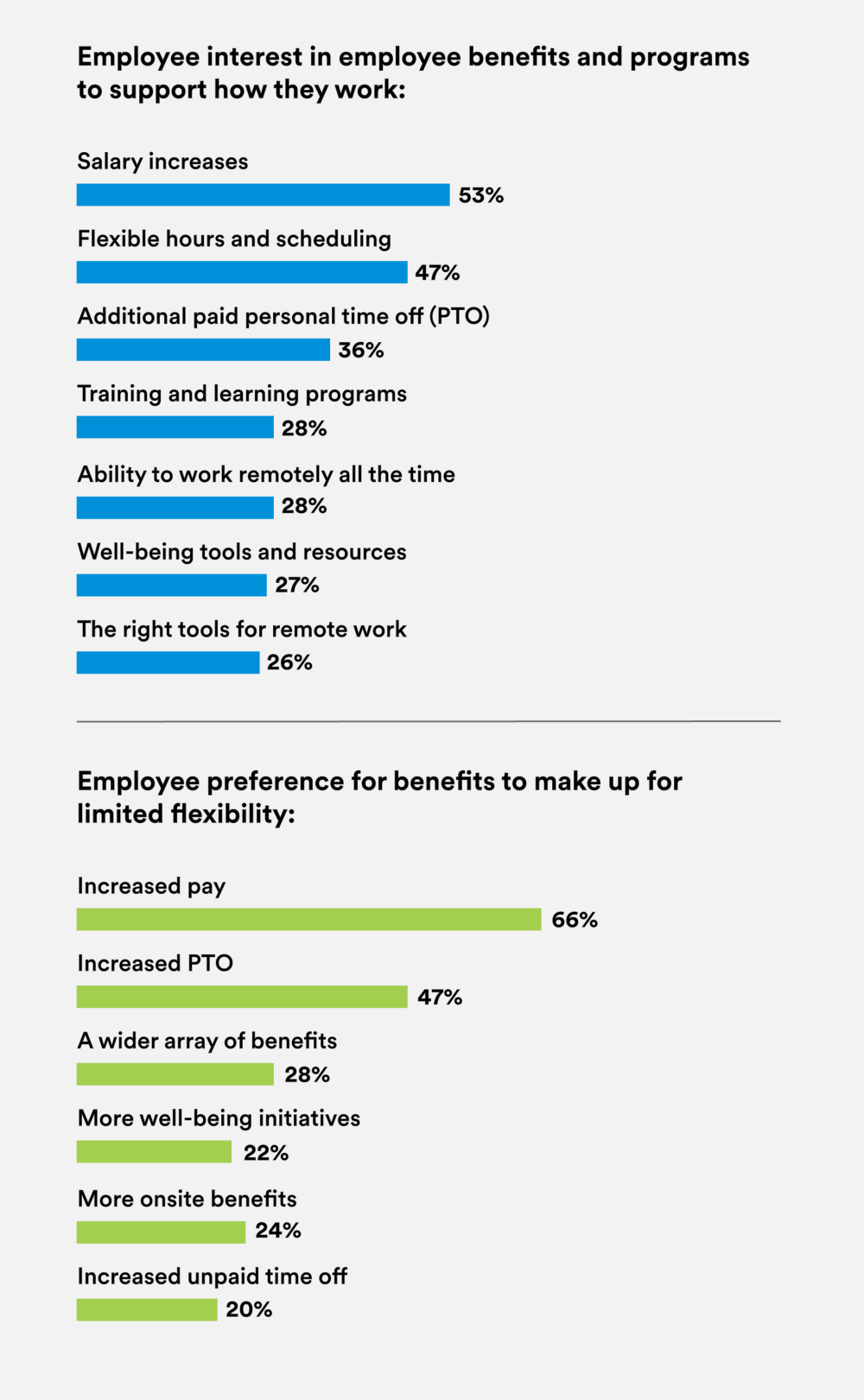Cracking the code on flexibility
As employee expectations for work-life balance continue to rise, employers can offer flexible working arrangements to promote greater well-being and loyalty.
The right approach to flexibility:
- Has become imperative given rising employee demand
- Requires balancing multiple variables and options
- Drives higher loyalty and intent to stay on the job
After a few years of pandemic-driven disruption, employees feel they’ve demonstrated the ability – and earned the right – to work in the ways that are most comfortable for them. And it’s not simply the convenience of working from home (WFH). Employees believe flexible hours, time-management programs, financial allowances for home offices and other benefits designed for work-life balance improve their well-being. In fact, workers now consider increased flexibility as the second-most important element of their compensation and benefits package, just behind pay raises.
MetLife’s 2022 Employee Benefit Trends Study demonstrates just how important flexibility has become to employees. It also highlights employers’ increasing recognition of the shift in worker attitudes and the value of offering the right mix of benefits and support.
But cracking the code on flexibility is not easy. For one thing, it can mean different things to different employees, especially within a heterogeneous workforce, and for organizations in different industries.
Thus, employers must account for a range of variables – when and where employees work, what they wear, and how PTO can be used – to provide the flexibility their employees want, while still meeting the unique needs of the business. Our research confirms that the substantial talent management benefits more than justify the effort.
Why and how flexibility matters to employees
A few years of remote and hybrid working have heightened employees’ expectations around flexible arrangements, with more than half now considering it an essential condition of employment. Flexibility is also a powerful tool for retention. Employers that offer more flexibility are more attractive to both new hires and their existing talent.
Rising expectations regarding flexibility have been accompanied by higher levels of dissatisfaction with what employers offer to help employees manage both work and life.
Employers may be surprised by these findings, given their expansion of flexibility options and programs during the last few years. But they can look to the direct link between flexibility and workers’ mental health as inspiration to find new ways to deliver the flexibility employees are looking for. Employees who have the flexibility they need to manage both work and life are significantly more likely to say they feel mentally healthy than employees who don’t.
The bottom line is that the stakes around flexibility and employee well-being are high.
The win-win impact of flexibility
By improving work-life balance through flexibility, employers can enhance the holistic well-being of their workforce and increase worker satisfaction and loyalty at the same time. Policies that provide flexibility help employees feel valued and seen by their employers, leading some workers to say they’ll stay with their current organization until they retire. That speaks to the unique power of flexibility in a tight labor market.
Recommended actions: expanding options to move the needle on flexibility
The right approach to flexibility will vary for different employers, based on the demographic make-up of their workforce, their organizational cultures and industry norms, and what’s feasible for their operating models and budgets. Employers can get creative in supporting workers in finding a healthy work-life balance.
- Expanded leave policies allow employees to take time off to attend to personal needs (e.g., to care for young children or aging parents, access mental health care). The more flexible the policies, the better suited they will be to the diverging needs of the heterogeneous workforce.
- Flexible scheduling is another way to support employees (and caregivers in particular) looking to manage responsibilities outside of work.
- Establishing clear boundaries despite always-on technology will enable employees to feel supported when they are offline for the day or tending to personal matters. Leaders can set an example and empower employees to really unplug when they are offline.
- Remote working options may be the pandemic’s main legacy in the workplace. Employees want options in terms of where they work, whether it’s full-time, a few days a week or on an ad-hoc basis.
- Flexibility-friendly policies and programs, such as home office stipends, help set up employees for success when WFH is necessary or just makes sense. Culturally sensitive guidelines for scheduling, holidays, PTO, and dress-codes also help create more inclusive work environments, even as they provide workers more flexibility.
- Solving for jobs and roles that can’t be done remotely is also key. More paid time off and a wider range of benefits (including on-site benefits and more well-being programs and tools) can help compensate workers who have to be on site all the time. More benefits are especially important to caregivers.
Learn more
Survey Methodology:
The research was conducted by The Harris Poll on behalf of MetLife among 1,936 American adults 21 years or older. The survey was conducted August 1 to August 12, 2022.
Data are weighted where necessary by age, gender, race/ethnicity, region, education, marital status, household size, employment, household income and propensity to be online to bring them in line with their actual proportions in the population.
Respondents for this survey were selected from among those who have agreed to participate in our surveys. The sampling precision of Harris online polls is measured by using a Bayesian credible interval. For this study, the sample data is accurate to within + 2.3 percentage points using a 95% confidence level. This credible interval will be wider among subsets of the surveyed population of interest.

